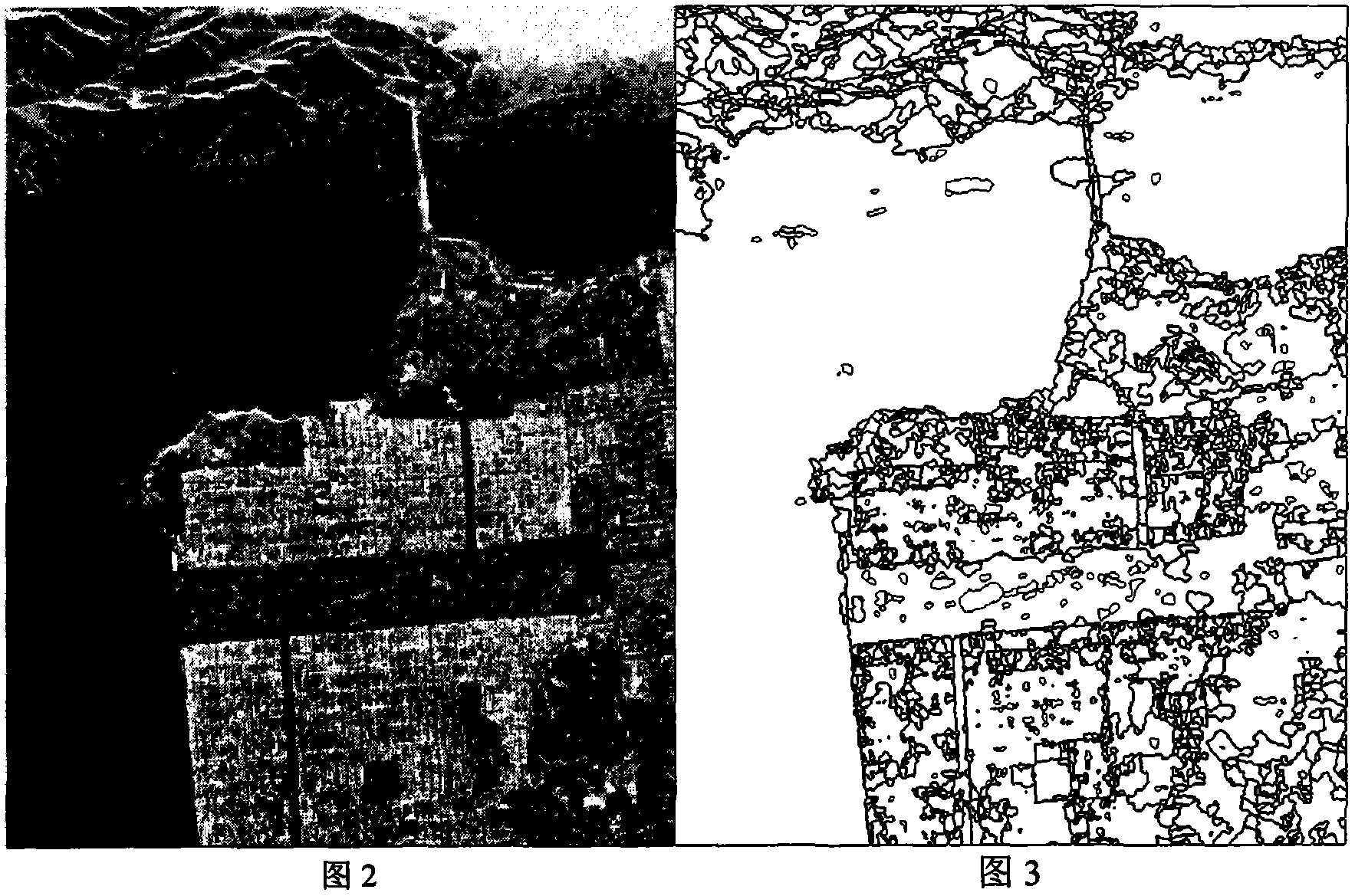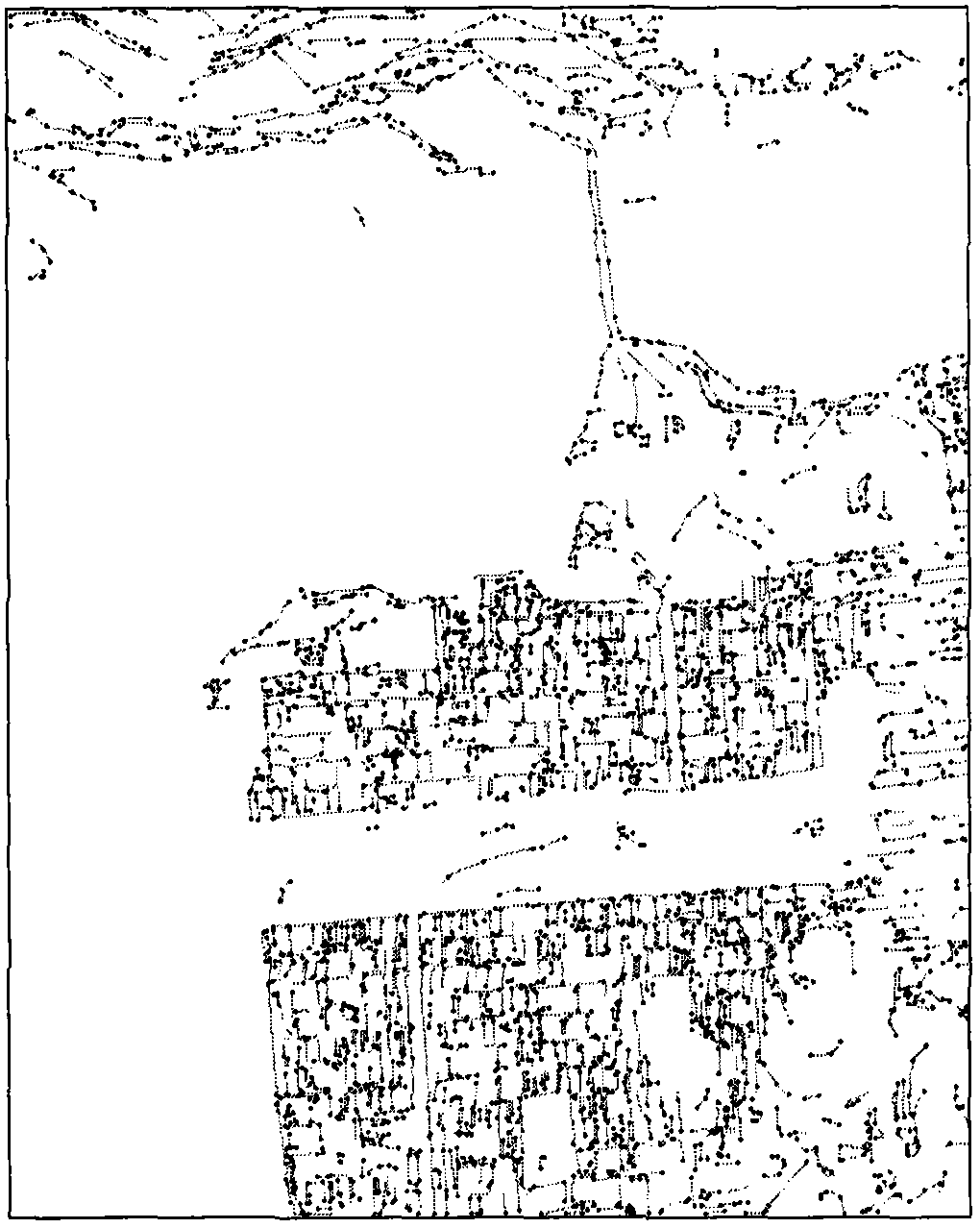Polarimetric SAR (synthetic aperture radar) terrain classification method based on semantic information and polarimetric decomposition
A semantic information and feature classification technology, applied in the field of image processing and remote sensing, can solve problems such as poor consistency of classification areas, difficult areas, and boundaries easily affected by noise, and achieve the effect of improving regional consistency
- Summary
- Abstract
- Description
- Claims
- Application Information
AI Technical Summary
Problems solved by technology
Method used
Image
Examples
Embodiment 1
[0034] The present invention is a polarization SAR feature classification method based on semantic information and polarization decomposition, and performs unsupervised feature classification for low-resolution polarization SAR images acquired in advance, refer to figure 1 , The implementation steps of the classification process of the present invention include:
[0035] Step 1. Input the data of the polarization SAR image to be classified, process the polarization SAR data to obtain the amplitude values of the three channels of the polarization SAR data, and fuse the amplitude values of the three channels to obtain the backscatter of the polarization SAR image Total power graph, such as figure 2 Shown is the span map of NASA / JPLAIRSAR L-band fully polarized San Francisco data. Use the mean shift to the span graph to obtain the over-segmentation result graph of the span graph; and extract the ridge sketch composed of line segments of the span graph according to the prime sket...
Embodiment 2
[0081] The polarization SAR feature classification method based on semantic information and polarization decomposition is the same as that in Example 1. The simulated data and images are described as follows:
[0082] 1. Simulation conditions
[0083] (1) Select NASA / JPL AIRSAR L-band fully polarized San Francisco data;
[0084] (2) In the simulation experiment, Primal Sketch sparse means that the parameter N in the model is 3, M is 18, and the threshold ε is 20;
[0085] (3) In the simulation experiment, the number of nearest neighbors k is 9;
[0086] (4) In the simulation experiment, the seed line segment threshold δ 1 Take 20; line segment growth threshold δ 2 Take 12;
[0087] (5) In the simulation experiment, the region merging threshold U is set to 0.7;
[0088] (6) In the simulation experiment, the neighborhood window in the H / α-Wishart classification based on MRF is selected as 3*3.
[0089] 2. Simulation content and results
[0090] Using NASA / JPLAIRSAR L-band fully polarized San ...
Embodiment 3
[0092] The classification method of polarized SAR ground objects based on semantic information and polarization decomposition is the same as in embodiment 1-2, and the H / α-Wishart classification method based on MRF is the same as step 5 in embodiment 1. As a comparative experiment of the present invention, simulation The data and results are as follows:
[0093] 1. Simulation conditions
[0094] (1) Select NASA / JPLAIRSAR L-band fully polarized San Francisco data;
[0095] (2) In the simulation experiment, the neighborhood window in the H / α-Wishart classification based on MRF is selected as 3*3.
[0096] 2. Simulation content and results
[0097] Using NASA / JPL AIRSAR L-band fully polarized San Francisco data, the MRF-based H / α-Wishart classification method is used for classification, which is a pixel-based classification method. Picture 12 Is a span graph, Figure 13 It is the result of the H / α-Wishart classification method based on MRF. It can be seen from the figure that this metho...
PUM
 Login to View More
Login to View More Abstract
Description
Claims
Application Information
 Login to View More
Login to View More - R&D
- Intellectual Property
- Life Sciences
- Materials
- Tech Scout
- Unparalleled Data Quality
- Higher Quality Content
- 60% Fewer Hallucinations
Browse by: Latest US Patents, China's latest patents, Technical Efficacy Thesaurus, Application Domain, Technology Topic, Popular Technical Reports.
© 2025 PatSnap. All rights reserved.Legal|Privacy policy|Modern Slavery Act Transparency Statement|Sitemap|About US| Contact US: help@patsnap.com



